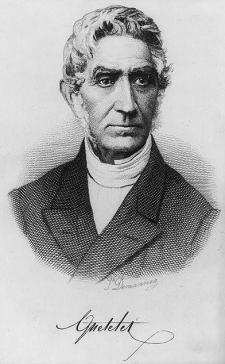One of the main topics of my research is the historical epistemic transfer of theories, methods, concepts, instruments, and the like between disciplines: such transfer can be framed as the "flow" of "cognitive goods."
As a first case study, I have looked at the research method of the questionnaire, how it was developed in multiple disciplines, and how the method found its way into the discipline formation process of General Linguistics around the turn of the twentieth century. For a second case study my research turns to statistical methods and how these were adopted by a large amount of disciplines. Reviewing various disciplinary journals shows that a range of disciplines such as botany, economics, astronomy, nutrition studies, sociology, epidemiology, meteorology, and criminology not only refer to similar statistical methods and techniques, but also all point towards the same scholar as influential to their methodology: the Belgian astronomer and statistician Lambert Adolphe Jacques Quetelet (1796-1874). This intrigues me: what does this similarity mean for these disciplines, these methods, and especially for Quetelet, within the context of nineteenth-century statistics? How were Quetelet and his work adopted by these varying disciplines? In this project I have chosen to look at Quetelet’s influence on botany and I examine how Quetelet’s methods and phenological observations at the Royal Observatory of Brussels were received. Through this case study I want to show an episode of the flow of cognitive goods.

